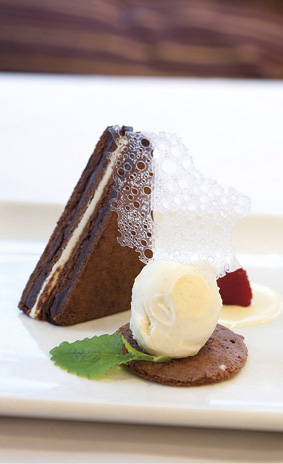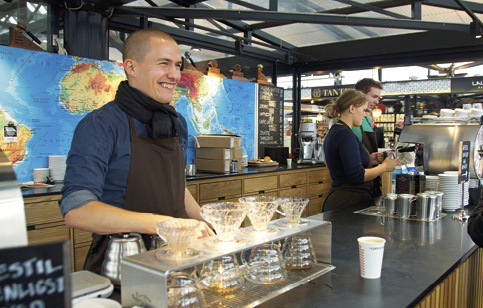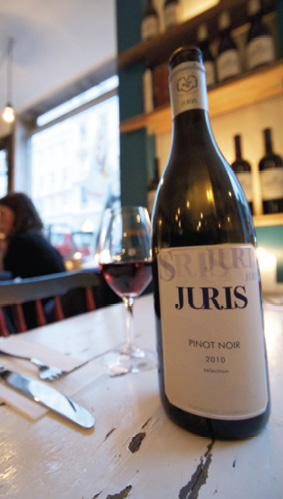Parkmuseerne
Christian IV’s Renaissance summer palace, the Rosenborg Slot, provides a regal contrast with the crowded streets of the inner city to the east. To its west, running from Østerport station in the north to Vesterport in the south is an almost continuous string of attractive parks and gardens. Apart from being lovely places to explore, they also house several significant museums, including the Statens Museum for Kunst and Hirschsprungske Samling, and the city’s Botanical Gardens. It was thanks to visionary Town Planner Ferdinand Mekdahl that the ring of ramparts and bastions encircling the city here were maintained as a green belt in 1857. The area between the ramparts and the lake later developed into sought-after residential areas and streets such as Nansensgade have a strong neighbourhood feel.
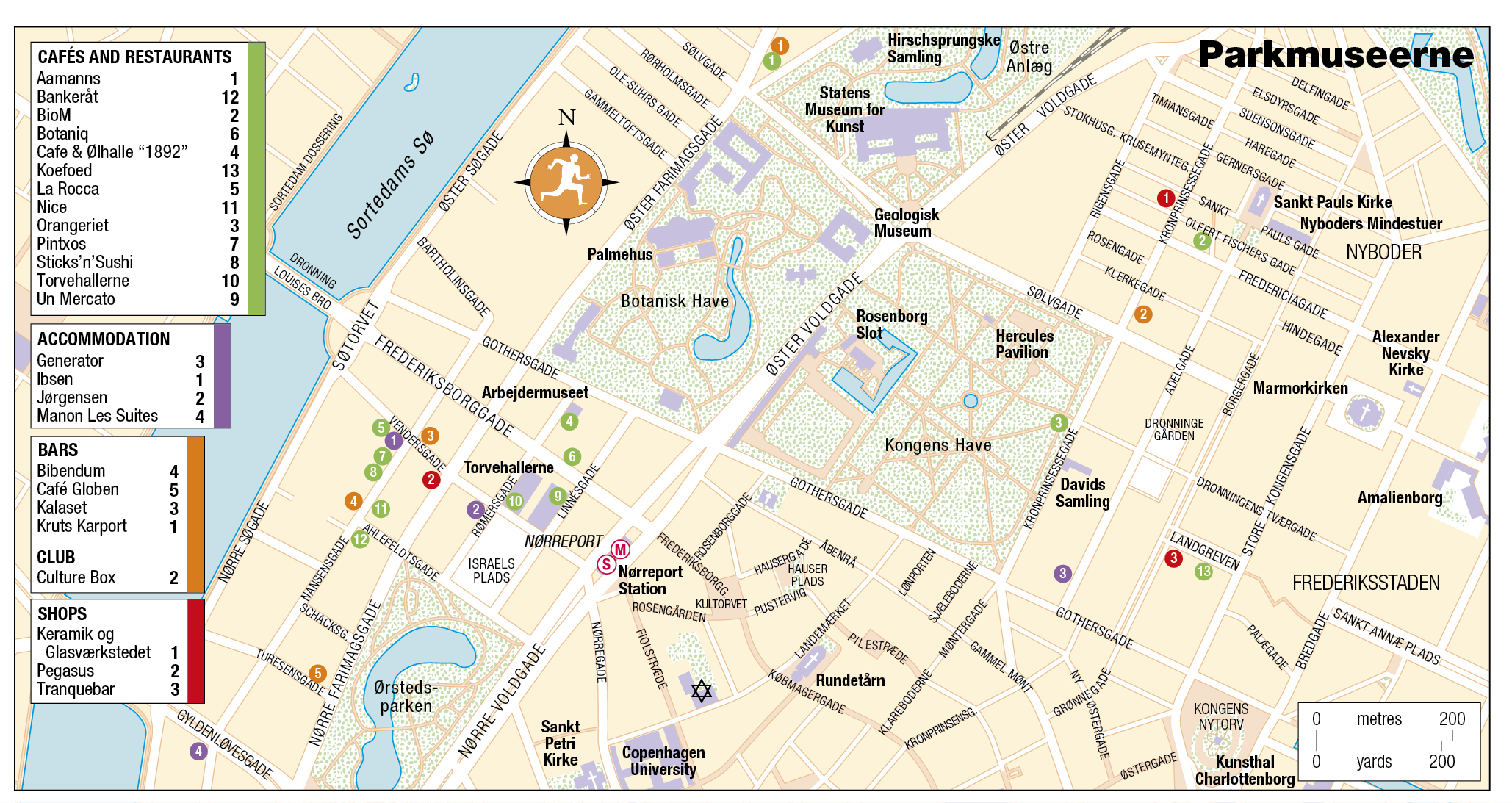
Rosenborg Slot
4A Østervoldgade ![]() 33 15 32 86,
33 15 32 86, ![]() kongernessamling.dk. Castle: May, Sept & Oct daily 10am–4pm; June–Aug daily 10am–5pm; Nov–April Tues–Sun 10am–2pm. 110kr, 145kr for combined ticket with Amalienborg. Gardens: sunrise to sunset; free.
kongernessamling.dk. Castle: May, Sept & Oct daily 10am–4pm; June–Aug daily 10am–5pm; Nov–April Tues–Sun 10am–2pm. 110kr, 145kr for combined ticket with Amalienborg. Gardens: sunrise to sunset; free.
A Disneyesque fairy-tale palace, the Rosenborg Slot was originally built as a summer residence for Christian IV, a retreat from the rabble at Christiansborg. Completed in 1634, it’s a grand red-brick Renaissance edifice decorated with spires and towers and ornate Dutch gables. The palace remained a royal residence until 1838, when it was opened to the public.
The star exhibit inside is the crown jewels, chief among them the Crown of the Absolute Monarch which weighs in at a hefty two kilos and sports two massive sapphires. The jewels are kept locked in the basement Treasury, behind thick steel doors. Also downstairs are the priceless wines of the Royal cellar, only cracked open on very special occasions.
Before heading to the basement it’s worth taking in Frederik III’s lavish marble room with its extravagant stucco ceiling and a chess set made up of Danish and Swedish pieces (in reference to the war he lost to Karl Gustav in 1658). Another highlight of the palace is the magnificent Long Hall on the second floor with its gilded coronation throne, made from narwhal tusk, and three silver lions standing guard.
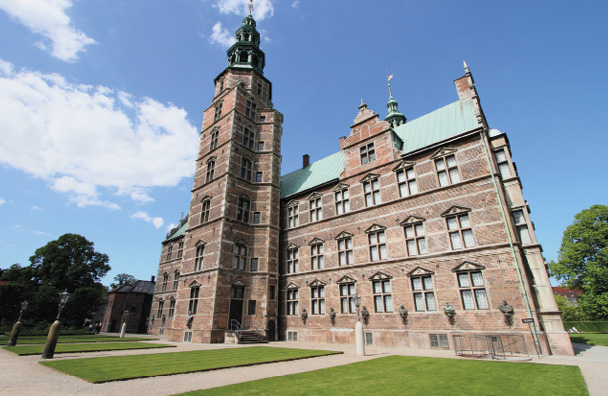
Rosenborg Slot
Park life
Based around the Rosenborg Slot, the beautifully manicured Kongens Have (King’s Garden) is Copenhagen’s oldest park and a favoured spot in summer when there is live music and performances in the puppet theatre (June–Aug daily except Mon 2 & 3pm; free; ![]() marionetteatret.dk). Stretching north from the Botanisk Have (Botanical Gardens), the undulating hills of Østre Anlæg are part of the old fortifications and house a number of different children’s playgrounds including one in front of the National Museum of Art. Ørstedsparken, with its rolling hills and rampart lake, is a popular place to go in winter for skating and downhill sledging. There are also two innovative playgrounds here, one with staff at hand to show you the ropes. Come nightfall it becomes a gay hangout (in case you were wondering about the signs promoting safe sex).
marionetteatret.dk). Stretching north from the Botanisk Have (Botanical Gardens), the undulating hills of Østre Anlæg are part of the old fortifications and house a number of different children’s playgrounds including one in front of the National Museum of Art. Ørstedsparken, with its rolling hills and rampart lake, is a popular place to go in winter for skating and downhill sledging. There are also two innovative playgrounds here, one with staff at hand to show you the ropes. Come nightfall it becomes a gay hangout (in case you were wondering about the signs promoting safe sex).
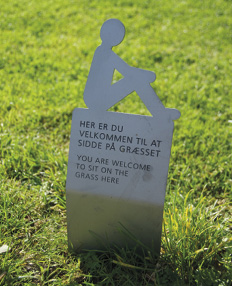
Botanisk Have
mapGothersgade 128 ![]() botanik.snm.ku.dk. Daily: May–Sept 8.30am–6pm; Oct–April 8.30am–4pm.
botanik.snm.ku.dk. Daily: May–Sept 8.30am–6pm; Oct–April 8.30am–4pm.
Relocated in 1874 from a small park behind Charlottenborg palace the Botanisk Have (Botanical Gardens) packs in pretty much every plant you are likely to find in Denmark together with several exotic species. It’s a pleasant and peaceful place to wander, with its long squiggly pond clearly showing the area’s previous incarnation as the city ramparts.
Among the many greenhouses in the gardens, the grand Palm House overshadows them all. It was donated by brewing magnate Carl Jacobsen who was deeply involved in its design and its various ingenious temperature and humidity controls. You will also find houses for cacti, orchids, alpine plants, and a new greenhouse for endangered species (check the website for specific opening times).
The Botanical Museum, part of the gardens, is currently closed. A brand new National Natural History Museum, complete with innovative underground architecture, is due to open in 2020 at the northern end of the gardens; this will also incorporate the existing Zoological and Geological museums.
Statens Museum for Kunst
Sølvgade 48–50 ![]() 33 74 84 94,
33 74 84 94, ![]() smk.dk. Tues & Thurs–Sun 10am–5pm, Wed 10am–8pm. Permanent exhibitions & X-rummet free, charge for changing exhibits
smk.dk. Tues & Thurs–Sun 10am–5pm, Wed 10am–8pm. Permanent exhibitions & X-rummet free, charge for changing exhibits
Found in the southeastern corner of Østre Anlæg park, the vast Statens Museum for Kunst (National Museum of Art) houses the bulk of Christian II’s extensive collection of European paintings and sculptures. Housed in an 1896 building by Dahlerup (see also Ny Carlsberg Glyptotek) and complemented by a modern extension in 1998, the collection is divided into European art from the fourteenth to the eighteenth century, Danish and Nordic Art from 1750 to 1900, French art from 1900–1930, and modern art from the twentieth century.
Trying to see the entire museum in a day is almost impossible. Instead, if you’re interested in Danish art, head straight for the second floor where works from the so-called Golden Age (1800–1850) are displayed. Christoffer Eckersberg was among the first to develop a distinctly Danish style of coolly-lit landscapes, portraits and interiors, an approach adopted by his many distinguished pupils.
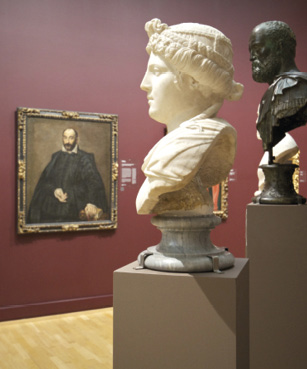
Statens Museum for Kunst
There are also several outstanding painters from the end of the nineteenth century, including the Impressionist-influenced Skagen school – among them P.S. Krøyer and Anna Ancher. Look out too for the restrained, almost photographic, interiors painted by their younger contemporary Vilhelm Hammershøi. You’ll also find work from the twentieth-century CoBrA movement (a group of artists from Copenhagen, Brussels and Amsterdam), which includes the wildly expressionist paintings of radical Danish artist Asger Jorn. Contemporary international art is displayed in the museum’s extension and there is a regular programme of temporary exhibitions.
Hirschsprungske Samling
Stockholmsgade 20 ![]() 35 42 03 36,
35 42 03 36, ![]() hirschsprung.dk. Tues–Sun 11am–4pm. 90kr, free some Weds.
hirschsprung.dk. Tues–Sun 11am–4pm. 90kr, free some Weds.
More manageable than the Statens Museum, the Hirschprung Collection also focuses on art from the Golden Age, donated by Heinrich Hirschsprung, who had made his fortune in tobacco. Housed in a beautiful Neoclassical pavilion, paintings are displayed in small intimate rooms – a condition Hirschsprung set before handing over his collection to the state in 1902.
Christen Købke, one of the greatest of the Golden Age painters is well represented, and there are several atmospheric landscapes by his contemporary Johan Lundbye, as well as some of the very best of P.S. Krøyer’s Skagen paintings. Kristian Zahrtmann strikes a more frivolous note, with his anecdotal history paintings depicting various royal scandals at the Danish court, including Queen Caroline Mathilde’s affair with court physician Johann Friedrich Struensee.
Arbejdermuseet
Rømersgade 22 ![]() 33 93 25 75,
33 93 25 75, ![]() arbejdermuseet.dk. Daily 10am–4pm, 65kr.
arbejdermuseet.dk. Daily 10am–4pm, 65kr.
Dedicated to the Danish workers movement, Arbejdermuseet is housed in the group’s old meeting house from 1878 and covers the cultural history of the Danish working class from 1850 onwards.
Although the museum is probably more of interest to Danes, the historic assembly hall is definitely worth a peek. Its tranquil bucolic decor witnessed some of the movement’s most significant gatherings, not least the Socialist World Congress of 1910 which had Lenin himself in attendance (there’s a Russian-made statue of him in the foyer dating from the late 1980s). The children’s section, although mostly in Danish, is also popular, and often noisy, featuring doll’s houses, dressing-up gear, colouring-in books and even a small pretend brewery. There’s also a museum shop selling iconic workers’ posters from the old Soviet Union and a basement restaurant knocking out traditional workers’ dishes from the last century.
Dining with the Danes
Danish food exploded on the global stage in 2010, when Noma was named the world’s top restaurant. Since then, simple Nordic dishes made from seasonal, locally sourced ingredients (preferably foraged) have taken Copenhagen by storm. While Noma’s time at the top has been put on pause – closed in 2016 while being transformed into an urban farm – the Danish capital continues to garner more Michelin stars than Stockholm, Oslo and Helsinki put together, and boasts a slew of eateries headed by Noma protégés, such as and, where the Nordic kitchen can be sampled while still leaving your bank balance intact. Noma’s old premises were taken over by Barr in 2017; the brainchild of chef Thorsten Schmidt, Barr‘s menu is inspired by the food and drink traditions of the European beer belt.
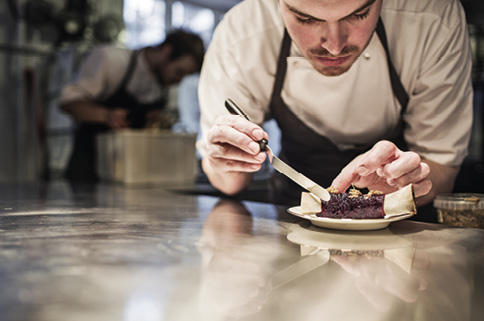
Davids Samling
Kronprinsessegade 30 ![]() 33 73 49 49,
33 73 49 49, ![]() davidmus.dk. Tues & Thurs–Sun 10am–5pm, Wed 10am–9pm. Free.
davidmus.dk. Tues & Thurs–Sun 10am–5pm, Wed 10am–9pm. Free.
Spread over all five floors of an eighteenth-century apartment building, the captivating Davids Samling comprises the remarkable collection of one C.L. David (1878–1960), a Danish lawyer who devoted his life to the acquisition of fine and applied art. It’s a labyrinth of rooms, and the museum plan handed out on arrival will prove essential. The highlight without doubt is the extensive display of Islamic art on the third and fourth floors. One of the most important in the West, it includes delicate Persian miniatures, striking blue Ottoman mosaics and beautifully decorated glass bowls from Egypt and Syria.
David’s collections of eighteenth- and nineteenth-century porcelain and furniture and twentieth-century Danish art – look out for the evocative landscape paintings of Vilhelm Hammershøi, and the extravagant French ceramics – are also very impressive, but it’s the Islamic collection that is likely to lodge itself in your memory.
Torvehallerne and Israels Plads
Market halls: Frederiksborggade 21 ![]() torvehallernekbh.dk. Mon–Thurs 10am–7pm, Fri 10am–8pm, Sat 10am–6pm, Sun 11am–5pm.
torvehallernekbh.dk. Mon–Thurs 10am–7pm, Fri 10am–8pm, Sat 10am–6pm, Sun 11am–5pm.
Since its opening in 2011, the new Torvehallerne food market has been a resounding success, attracting over sixty thousand visitors a week to its many artisan stalls and restaurants.
Israels Plads next door, once known for its flower stalls, is a large public square that merges with neighbouring Ørstedsparken. Recently given a major makeover by local architectural firm COBE, the space is raised above street level, like a “flying carpet”, with areas for skateboarding, basketball and just hanging out. It was given its current name in 1968, in memory of Jewish persecution in Denmark during World War II.
Nyboder
Nyboder Mindestuer, 24 Sankt Paulsgade ![]() 50 56 49 69,
50 56 49 69, ![]() nybodersmindestuer.dk. Sun 11am–2pm. 20kr.
nybodersmindestuer.dk. Sun 11am–2pm. 20kr.
Standing out in contrast to the area’s grand regal mansions, the colourful and quaint Nyboder district is made up of a series of rows of charming, predominantly ochre-coloured terraced houses. The neighbourhood was originally built in the 1630s to provide housing for Christian IV’s ever-expanding naval fleet, and had its own rules and regulations enforced by its own police. Most of the current buildings date from the eighteenth century – all except for a single row of houses along Sankt Paulsgade, where the Nyboders Mindestuer (Nyboder Memorial Rooms) has been largely kept intact and functions as a museum.
Diminutive though Nyboder’s houses may be, this has always been a highly sought-after place to live, with its own private school and hospital, and demand remains high, particularly since (as of 2006) priority is no longer given to military personnel.

Nyboder

